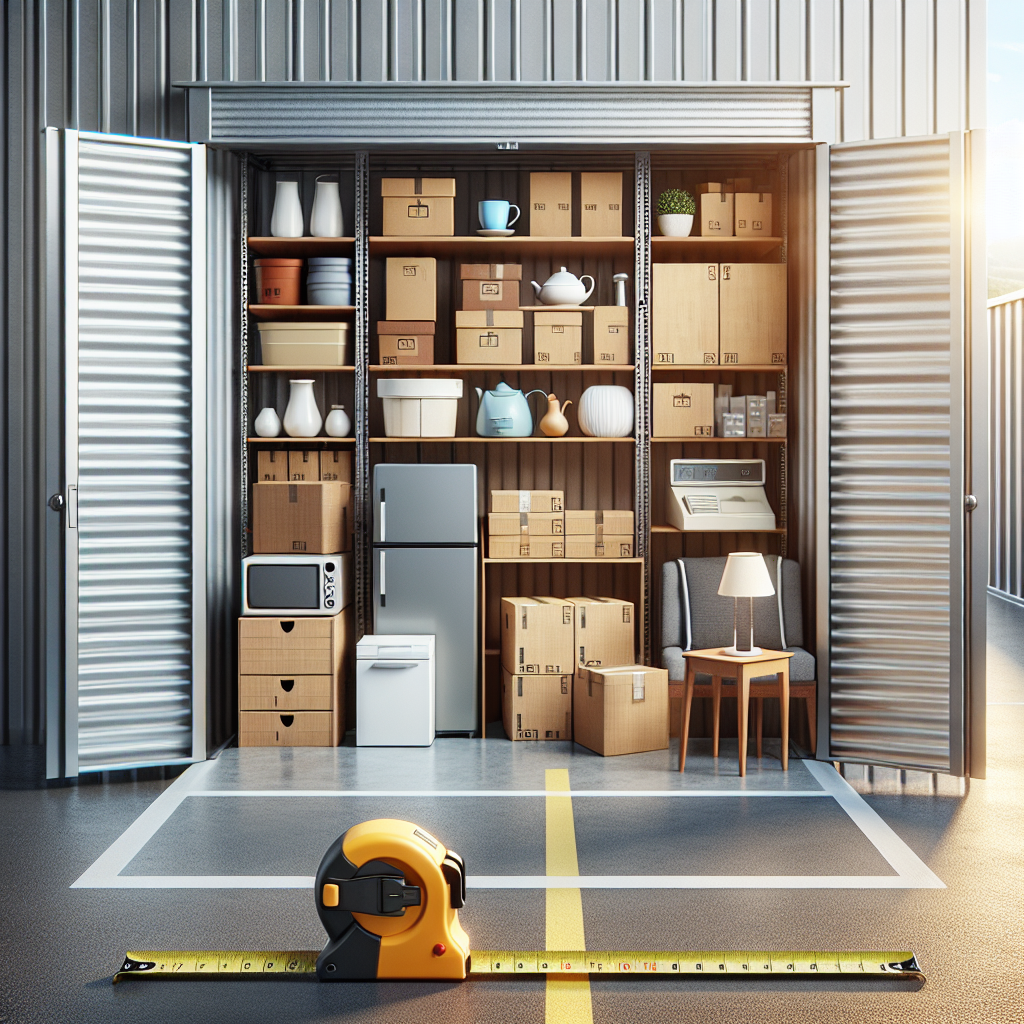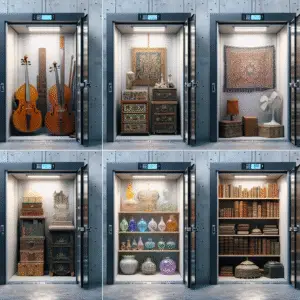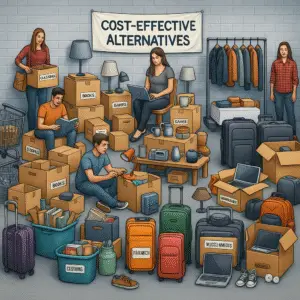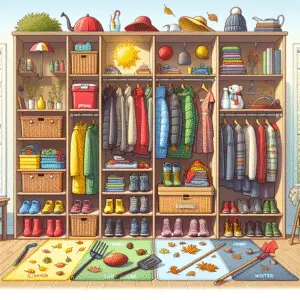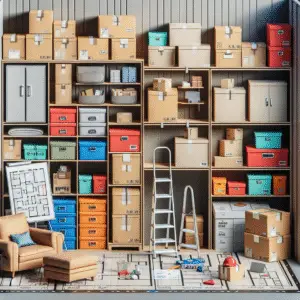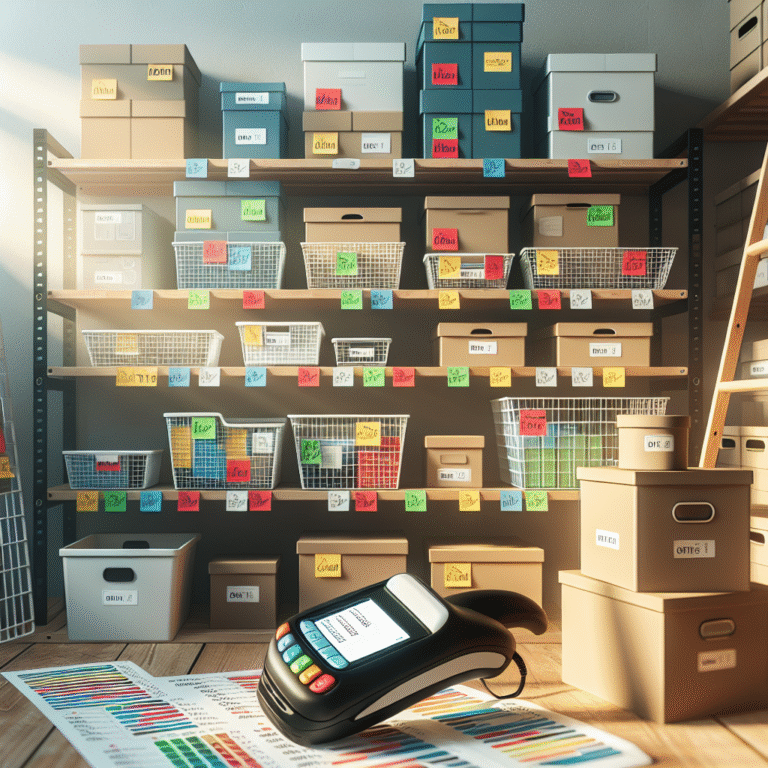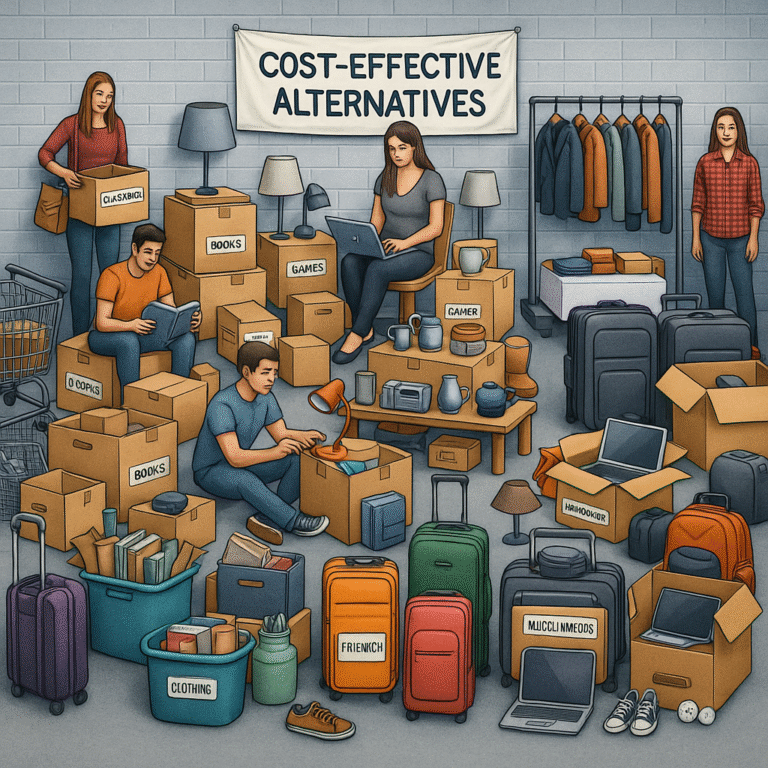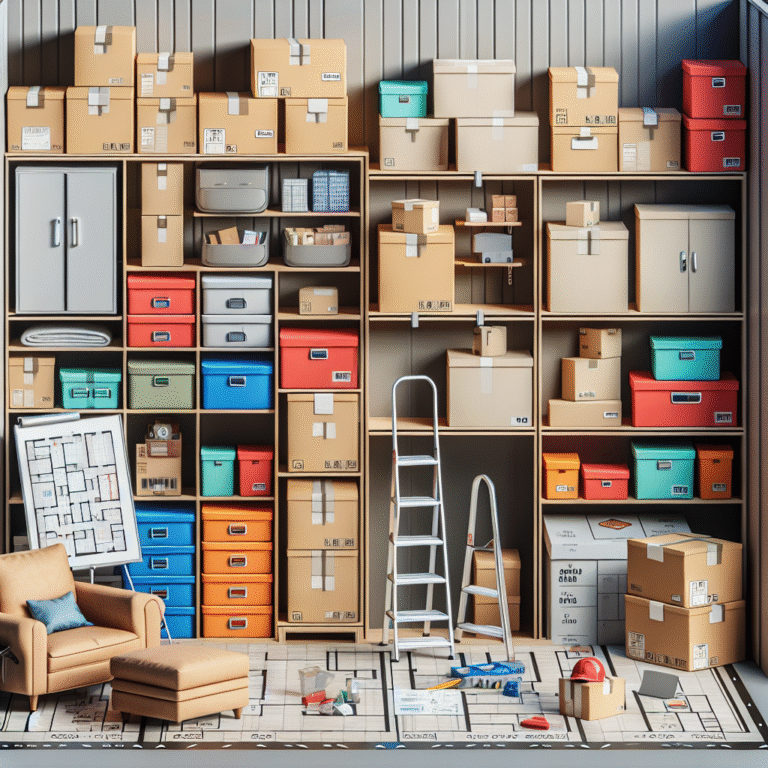How to Calculate the Perfect Storage Unit Size for Your Needs
Wasting hundreds of dollars on storage space you don’t need is a mistake you can completely avoid with just 10 minutes of planning. In 2025, with rental prices hitting record highs across the country, the average American is throwing away over $42 per month on unused storage space.
What if there was a simple way to determine exactly how much storage you need—down to the cubic foot—before you sign that rental contract?
Why Choosing the Right Storage Unit Size Matters
Finding the perfect storage unit size isn’t just about convenience—it’s about protecting your wallet. Renting a unit that’s too large means you’re essentially paying for empty air, while choosing one that’s too small can result in damaged belongings or the need to rent a second unit. According to the Self Storage Association, approximately 38% of renters end up upgrading to larger units within the first six months, incurring moving costs, additional fees, and the hassle of transferring their belongings. This common mistake can be easily avoided with proper planning and calculation.
Beyond financial considerations, properly sizing your storage unit impacts the safety and condition of your items. Overcrowded units restrict airflow, potentially leading to moisture buildup and mold growth. They also make accessing specific items nearly impossible without completely unpacking the unit. Planning for the right amount of space ensures your belongings remain in good condition and accessible when you need them.
Common Storage Unit Sizes and Their Typical Uses
Understanding standard storage unit dimensions is the first step in calculating your needs. Small units (5×5 to 5×10) typically offer 25-50 square feet of space, ideal for seasonal items, college students’ belongings during summer breaks, or the contents of a small studio apartment. These units can comfortably hold a twin mattress, several medium-sized boxes, and a few pieces of small furniture or appliances. They’re perfect for decluttering without committing to a significant monthly expense.
Medium-sized units (10×10 to 10×15) provide 100-150 square feet, roughly equivalent to a standard one-bedroom apartment. These versatile spaces can accommodate a queen-sized bed, sofa, dining set, and numerous boxes. Most families using storage during a move or renovation find this size range sufficient. The 10×10 is often called the “golden standard” in the industry due to its popularity and flexibility.
Large units (10×20 to 10×30) offer 200-300 square feet and are suitable for storing the contents of multiple bedrooms or a complete household. These units can fit large appliances, multiple furniture sets, and dozens of boxes with room to spare. Business owners often choose these sizes for inventory storage, document archiving, or equipment storage. Vehicle storage also typically starts at this size range, with specialized options available for boats and RVs.
Steps to Calculate Storage Unit Size Needed
1. Take Inventory of Items You Plan to Store
Begin your calculation process by creating a comprehensive inventory list. Categorize your items into furniture, appliances, boxes, seasonal items, and miscellaneous goods. This organization not only helps with size calculations but also creates a record of what you’re storing. Digital inventory apps have become increasingly popular in 2025, with many offering built-in measurement features that automatically calculate space requirements. The most effective approach is to go room by room, listing everything that will be placed in storage.
2. Measure Large Items
Large furniture and appliances are the foundation of your storage calculation. Measure the length, width, and height of each major item, recording dimensions in feet to simplify calculations. Remember to account for items that can be disassembled or stored vertically. For example, table legs can often be removed, and sofas can sometimes be stood on end to save floor space. Many modern furniture pieces are designed with storage in mind, with modular components that can be more efficiently packed.
3. Estimate Number and Sizes of Boxes
Standard moving boxes come in small (1.5 cubic feet), medium (3 cubic feet), and large (4.5 cubic feet) sizes. Count how many of each size you’ll need based on your inventory list. As a general rule, small boxes are ideal for heavy items like books and dishes, medium boxes work well for clothing and toys, and large boxes are best for lightweight, bulky items like pillows and comforters. The latest industry guidelines suggest converting your box count to cubic feet for more accurate space estimation.
4. Use a Space Estimator Tool or Calculator
In 2025, storage calculators have become sophisticated tools that use augmented reality to visualize your items within various unit sizes. These digital assistants eliminate much of the guesswork from the process. Most major storage companies offer proprietary calculation tools on their websites or mobile apps. These calculators typically ask for the number and types of items you plan to store, then recommend an appropriate unit size. Some advanced tools even allow you to create a virtual layout of your unit to maximize space efficiency.
5. Consider Future Storage Needs
The most overlooked aspect of storage calculations is anticipating future needs. If you’re storing seasonally, consider what additional items might join your unit during different times of the year. If you’re in transition between homes, you might need to add more belongings before you move to your new place. Industry experts recommend adding a 10-15% buffer to your calculated space requirements to accommodate unexpected items or to ensure adequate walkway space for accessing your belongings. This small additional investment can prevent significant headaches later.
Special Considerations for Different Scenarios
Residential moves require different approaches depending on whether you’re staging, downsizing, or temporarily relocating. For home staging, focus on removing personal items and bulky furniture while keeping essential pieces. Downsizing often necessitates longer-term storage with careful organization of sentimental items. Temporary relocations might require more frequent access to your belongings, making layout and accessibility more important than maximum space efficiency.
Business storage presents unique challenges, especially when storing inventory versus documents. Inventory typically requires shelving systems and clear access paths, while document storage needs climate control and organization systems. The rise of e-commerce businesses has created increased demand for flexible storage solutions that allow for regular access and inventory management. Many facilities now offer specialized business units with features like package acceptance, Wi-Fi, and workspace areas.
Student and military storage often involves predictable cycles of storage and retrieval. These situations benefit from carefully measured calculations since budgets are typically tight. Many storage facilities offer specialized student packages with academic year timing and military discounts with deployment flexibility. The key consideration for these groups is finding the smallest sufficient unit since storage needs are often temporary and well-defined.
Tips for Efficient Packing and Maximizing Space
Uniform box sizes create stable, efficient stacking configurations that maximize vertical space. While it might be tempting to use random boxes you have on hand, investing in standard-sized moving boxes will dramatically increase the amount you can store in a given unit. Create a stable base with heavier boxes and stack lighter ones on top, keeping in mind that most units have 8-foot ceilings. Leave any fragile items until last, placing them on top or in easily accessible areas.
Disassembling furniture can reduce its footprint by up to 70%. Remove legs from tables, headboards from bed frames, and shelves from bookcases. Store these components together in labeled bags attached to the main piece. Modern storage tools like vacuum bags for soft goods can compress bulky items like comforters and winter coats to a fraction of their original size. These space-saving techniques have become increasingly sophisticated, with specialized solutions for everything from holiday decorations to sporting equipment.
Creating a detailed map of your storage unit may seem excessive, but it’s invaluable when you need to retrieve specific items months later. Label boxes on multiple sides with detailed contents and assign each a number that corresponds to your inventory list. Leave a narrow pathway through your unit if you anticipate needing access to items at the back. Consider creating “zones” within your unit for different categories of items or based on how frequently you’ll need to access them.
Mistakes to Avoid When Calculating Storage Unit Size Needed
The most common error in storage planning is ignoring the vertical dimension. Most units have 8-foot ceilings, providing significant cubic footage that often goes unused. When calculating your needs, multiply square footage by height to understand the true capacity of the unit. Stackable containers, tall wardrobes, and items that can be stored on end help maximize this vertical space. Remember that leaving some airflow around and between items helps prevent moisture issues in longer-term storage situations.
Overlooking climate control requirements can result in damaged belongings regardless of how perfectly you’ve calculated your space needs. Items like electronics, wooden furniture, musical instruments, artwork, and important documents require temperature and humidity regulation. Climate-controlled units typically cost 25-35% more but provide essential protection for valuable or sensitive items. The growing awareness of climate change impacts has made these units increasingly popular, with advanced systems that maintain optimal conditions year-round.
Accessibility planning is frequently sacrificed in the interest of maximizing space. If you’ll need regular access to certain items, calculate not just the space they occupy but the clearance needed to reach them. Some storage facilities now offer digital organization systems that help you track where specific items are located within your unit. Creating zones based on access frequency—with frequently needed items near the front—can save significant time and frustration.
When to Consult a Storage Expert
While online calculators are useful for standard residential storage, complex situations often benefit from professional guidance. Vehicle storage, particularly for classic cars, boats, or RVs, requires specialized knowledge about maintenance, climate considerations, and access requirements. Many facilities now employ certified storage consultants who can provide personalized recommendations based on your specific inventory. These experts often identify space-saving opportunities that automated calculators might miss.
Tools and Resources to Help Choose the Right Unit
The latest generation of storage calculators uses AI and machine learning to improve accuracy. These tools can analyze photos of your belongings to estimate volume and suggest optimal packing configurations. Some even incorporate 3D modeling to create virtual representations of your packed storage unit. The most advanced options can integrate with smart home inventory systems to automatically calculate storage needs based on items you’ve tagged for storage.
Mobile apps have revolutionized the storage calculation process by bringing measurement tools directly to your smartphone. Using LiDAR technology (now standard on most phones), these apps can instantly measure furniture dimensions and room volumes. They can also track your inventory in real-time as you pack, adjusting size recommendations accordingly. Many storage companies offer proprietary apps that connect directly to their booking systems for seamless unit selection.
Virtual video consultations have become the gold standard for accuracy in storage planning. These services connect you with a storage professional who can guide you through measuring your items via video call. The consultant can then make personalized recommendations based on your specific situation and storage facility options. This human touch combined with digital tools provides the highest level of confidence in selecting the right unit size.
Finding Your Perfect Fit
Calculating the right storage unit size is a balance of science and strategy. By taking inventory, measuring carefully, and using available calculation tools, you can find the perfect fit for your belongings without wasting money on unnecessary space. Remember to consider not just the items you have today, but how your storage needs might evolve over time. Whether you’re storing for a month or a year, the time invested in proper sizing will pay dividends in convenience and cost savings.
The right storage unit preserves not just your belongings but your peace of mind. With proper calculation, you’ll avoid the frustration of an overcrowded unit or the waste of paying for empty space. Today’s advanced tools and resources make finding your ideal storage size easier than ever before. Take advantage of these innovations to secure exactly the space you need—no more, no less—and enjoy the confidence that comes with smart storage planning.

